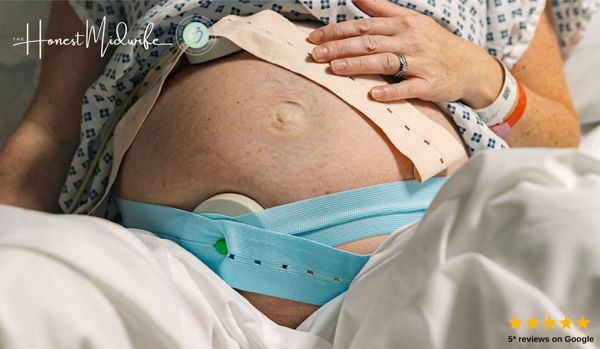Getting a diagnosis of gestational diabetes can be really scary and often comes as a shock to some mothers, however it is more common than people realise, affecting nearly 16% of pregnant women in the UK. It is important to point out that some people feel a stigma around gestational diabetes - be assured that if you do have it – it is NOT your fault and you are NOT to blame. There are certain risk factors that are out of our control regarding gestational diabetes and these include family history, race (South Asian, Chinese, African-Caribbean and Middle Eastern backgrounds are at higher risk), higher body weight, age, pre-diabetes and PCOS. Having gestational diabetes can increase your risk of getting type 2 diabetes later in life but there are things you can do to reduce your future risk.
What is Gestational Diabetes?
This is a type of diabetes that women don’t have before their pregnancy, it usually goes away after birth and it is often diagnosed at around 24-28 weeks. During pregnancy, the hormones that are produced by the placenta can cause your body to use insulin less effectively. Insulin is a hormone which acts as a key to unlock the door to cells to allow glucose to enter. After eating, carbohydrates are broken down into glucose (a sugar); insulin is released in response to this, which allows the glucose to be taken up by your cells to give you energy. In gestational diabetes, the glucose isn’t able to enter your body cells as easily so is hanging around in your bloodstream instead. There can be complications when blood glucose levels are too high in the body such as macrosomia (large birth weight) making a more difficult delivery, low blood glucose levels for your baby and extra fluid around your baby.
Relax and prepare for labour from the comfort of home, suitable for all levels. Includes breathing techniques to assist in labour & postures to release tension.
Are there any symptoms of gestational diabetes?
Most women will get no symptoms but some may one of more of the following: increased thirst, needing to pee more, tiredness or dry mouth. These are often common symptoms of pregnancy too, but during your antenatal appointments you will be screened for your risk of gestational diabetes and may be offered a test. If diagnosed you would be looked after by a specialist team consisting of midwives, diabetes specialist doctors, nurses and dietitians.
Shall I change my diet?
You should be seen by a diabetes dietitian soon after diagnosis to help learn about dietary changes which can help control your blood glucose (sugar) levels. Changing your diet and exercise routine can reduce your blood glucose levels, you should be given a blood sugar testing kit so you can monitor the effect of your changes. You should aim to have a well-balanced diet to provide your body and your growing bump with all the nourishment it needs. Remember everyone is different and what may work for one person won’t necessarily work for you.
You may be advised to choose lower GI (glycaemia index) foods over higher GI foods. This can sound complicated but it is amount making some small swaps and adjustments in your diet to reduce the increase in your blood glucose levels. Higher GI foods include sugary drinks and foods such as biscuits, cakes, sweets and ice cream, white bread, potatoes, white rice, fruit juice.
Join Louise Broadbridge, senior midwife & the face of instagram's @thehonestmidwife for a live, online class preparing you and your partner for natural labour, birth and beyond. Enjoyed by 1000's of expectant parents like you.
Some diet tips that could help to improve your blood glucose control:
- Increase your fibre intake. Fibre is a type of carbohydrate that our body doesn’t digest so choosing higher fibre carbohydrates will slow the rise in your blood glucose levels. Fruits & vegetables contain a good source of fibre and also beans and lentils.
- Aim to reduce the amount of pasta, rice or potatoes on your plate and bulk it out with some veggies.
- Try to go for wholegrain or brown varieties as these have more fibre and choose those without added fat, salt or sugar. Such a wholegrain bread, whole wheat pasta, brown rice or wholegrain flour.
- Choose higher fibre breakfast cereals such as Weetabix or bran flakes.
- Aim to space fruit portions through the day and have them between your meals. 80g is roughly one fruit portion and don’t have more than one at a time.
- Choose the whole fruit over fruit juice as the additional fibre in the skin of it will slow the absorption of the sugar.
- Increase your intake of healthy fats such as avocado on toast, adding nut butter to snacks or having a handful of nuts & seeds as a snack are good examples.
- Think about portion sizes. How much you eat can be just as important as the foods you eat. The amount of carbohydrate you eat in one go can have the biggest effect on your blood glucose levels. So if you have a very large portion of porridge which is a higher fibre breakfast option, will still increase your blood glucose levels!
- Rather than 2 slices of toast you could choose 1 slice of toast with 2 eggs on top!
- Check food labels. If you often choose low fat products then now is the time to check food labels and make sure there isn’t any added sugar in. For example, a low-fat yoghurt with added sugar will have more sugar than the full-fat option and therefore cause a greater spike in your blood glucose reading!
- Space your food intake out throughout the day so not all the carbohydrates are absorbed at one time. For example have 3 meals/day with snacks in between or have your dessert a couple of hours after a meal to reduce a greater blood sugar increase.
- To help get an idea of the carbohydrate content of foods and to help visualise how much is in each portion, this book which is supported by Diabetes UK is very useful - ‘Carbs & Cals’ Gestational Diabetes by Chris Cheyette & Yello Balolia or get the Carbs & Cals app.
Weight loss during pregnancy is never advisable due to the risk of your baby not getting enough nutrition.
Not dietary tips:
- Movement is really helpful with blood glucose control as the more we move, the muscle uses more glucose from the blood stream for fuel. It can’t be emphasised enough at how effective exercise can be to help control your diabetes control! A simple walk after a meal can be really effective. This could be a great time to try a new sport or new exercise classes such a yoga, pilates or swimming.
- Getting as much sleep as you can manage can be really helpful to help lower cortisol levels which can destabilise blood glucose control.
- Mindfulness and stress management tools such as breathing and relaxation can help with sleep.
- If your blood glucose levels are still too high despite lifestyle changes, your medical team can discuss starting medication with you.
Visit NHS website for more information: https://www.nhs.uk/conditions/gestational-diabetes/








